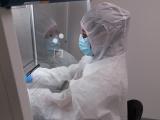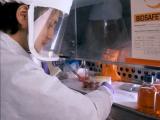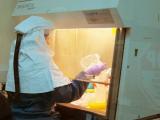Aug 1, 2005 (CIDRAP News) – Reports on the mysterious pig-borne disease spreading among humans in China are numerous, with the number of cases closing in on 200 and fatalities standing at 34.
The Western Pacific office of the World Health Organization (WHO) put the number of cases as of today at 181 with 34 deaths, but New Scientist reported 198 cases with 36 deaths. The disease is concentrated in the Sichuan province in the southwest, but a case was reported Saturday in the southern province of Guangdong, says an Associated Press (AP) story.
Eleven cases have been reported in Hong Kong since May 2004, according to MSNBC. Two of them coincide with the Sichuan outbreak, but whether they are related has not been determined.
The disease has been identified by the Chinese Ministry of Health as being caused by Streptococcus suis, a bacterium not uncommon in pigs. Human cases have been very rare, however, with mortality rates of less than 10%. Symptoms usually include high fever, vomiting, and hearing loss resulting from inflammation of the brain. Current cases are showing hemorrhaging under the skin, a very rare manifestation; only isolated hearing loss; and a mortality rate of 20%, according to various reports.
The lethality of the current cases and the symptom variations have called into question the S suis diagnosis. Robert Dietz of Asia-Pacific WHO is reported to have said that his organization is not convinced. Samson Wong, a microbiologist at the University of Hong Kong, told Reuters, "It could be another disease altogether, it need not be Streptococcus suis because the presentation is so atypical." Chinese authorities have not allowed any independent analysis of the cases to date.
BBC News reports that Chinese authorities knew of the S suis cases about a month ago but did not release that information until Jul 25. Local reporters have been banned from visiting areas where cases have occurred, with orders to newspapers to use dispatches from Xinhau, the state news agency, according to an MSNBC story.
Several sources today said the Yongshun pharmaceutical company in Guangdong shipped enough vaccine to Chengdu, capital of the Sichuan province, on Sunday to treat 350,000 pigs. The company claims they will be producing and shipping vaccine for another 10 million pigs shortly, according to a China Daily story today. To acquire immunity, pigs must be given two doses within a 15-day period; protection will last for more than 4 months.
Chinese experts have completed genetic sequencing of S suis, a Jul 28 Xinhua story reported. Scientists at the Chinese Center for Disease Control are studying how closely the pig and human bacteria are genetically correlated to investigate how the disease spreads from animals to humans.
Extensive control measures have been undertaken quickly in China, according to WHO, focusing on accurate identification of infected pigs, educational efforts informing people not to butcher or eat infected swine, and identification and treatment of human cases. Officials in Sichuan claim to have distributed more than 2 million posters to farmers and to have sent 50,000 heath workers and officials to 1.4 million hourseholds to register every pig in the region, according to a United Press International story.
S suis has just been declared by the Chinese government as a notifiable infectious disease, according to the Chinese business newspaper The Standard. The decision was made because of the vast scale of the infection and the high associated mortality.
China is the largest pork producer in the world, with production concentrated in the Sichuan province. About 80% of China's pork comes from small backyard farms, according to the Pacific News Service. Most of the current cases have occurred in farmers and butchers who have slaughtered or had contact with infected pigs.



















